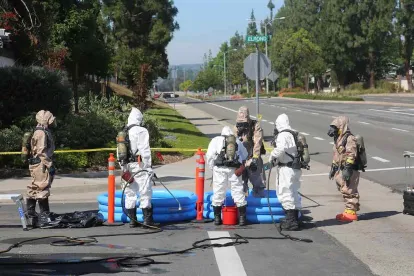When one cleans up contaminated property, often the cleanup calls for a neighbor to allow some action to address contamination migrating onto that neighbor’s property. A case from the Court of Appeals for the Fourth Circuit decided earlier this month reminds us that even if the cleanup meets every requirement of the regulators, the neighbor may still have claims for more.
West Virginia State University Board of Governors v. Dow Chemical Co., No 20-1712 (4th Cir. Jan. 10, 2022), involved a corrective action under the Resource Conservation and Recovery Act (RCRA) on the “Institute Facility” adjacent, but unrelated, to the campus of the University. Groundwater flows from the Institute Facility under the campus. That groundwater contains solvents at low concentrations.
RCRA calls for a corrective action permit to address releases of hazardous constituents from old solid waste management units at a facility that had “interim status” or a conventional permit to store, treat, or dispose hazardous waste. RCRA conventionally embraces risk-based corrective action. Therefore, eliminating exposure pathways through institutional controls can be a useful way to approach problems that do not presently pose a threat but could if a pathway were opened up. The low-concentration solvent contamination flowing under the University presented an opportunity for that sort of corrective measure. The corrective action permit called for imposition on the campus of a restrictive covenant prohibiting groundwater use and requiring installation of a vapor barrier in the construction of any new building, but did not include measures to capture the plume.
The University refused to consent to imposition of a restrictive covenant on its property unless the parties cleaning up the Institute Facility agreed to active measures to keep contaminated groundwater from reaching the campus and also to compensation. The industrial parties declined.
The University then sued in state court on a variety of common law theories. WVSU sought both an injunction to require further cleanup and damages. The industrial defendants removed the case to federal court under the federal officer removal statute. The district court remanded the case on the University’s motion, and the defendants appealed.
The court of appeals’ decision, therefore, primarily addressed whether a RCRA corrective action permittee is a “federal officer” for purposes of the removal statute, holding that the permittee is not. But the court also addressed whether the University’s effort to obtain an order requiring the defendants to mitigate the contamination and to pay damages for the impact to the campus property constituted an impermissible interference with a federal remedy.
The court held that RCRA does not bar suits to obtain additional relief. Even if this were a remedy under the Comprehensive Environmental Response, Compensation and Liability Act (CERCLA), the court of appeals opined that a state court damage claim, at least, would not constitute an impermissible challenge to a remedy.
Often, an underflowed neighbor will be happy that the regulators have declared a cleanup sufficient and granted protection against further demands for remediation. But sometimes that’s not good enough for the neighbor, and the neighbor may be able to pursue common law tort claims. In our experience, diminution in the value of property subject to a cleanup – even a successful one – can be surprising. Prudent remediators may want to take this exposure into account when crafting an overall strategy.



 />i
/>i
